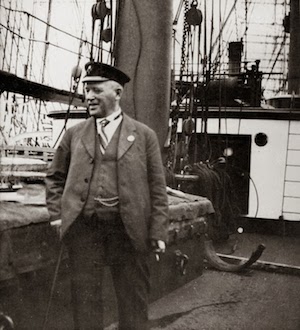Captain Erikson's Equation | John Michael Greer

Captain Gustaf Erikson
March 26, 2014 (Archdruid Report) -- I have yet to hear anyone in the peak oil blogosphere mention the name of Captain Gustaf Erikson of the Åland Islands and his fleet of windjammers.
For all I know, he’s been completely forgotten now, his name and accomplishments packed away in the same dustbin of forgotten history as solar steam-engine pioneer Augustin Mouchot, his near contemporary. If so, it’s high time that his footsteps sounded again on the quarterdeck of our collective imagination, because his story -- and the core insight that committed him to his lifelong struggle -- both have plenty to teach about the realities framing the future of technology in the wake of today’s era of fossil-fueled abundance.
Erikson, born in 1872, grew up in a seafaring family and went to sea as a ship’s boy at the age of nine. At 19 he was the skipper of a coastal freighter working the Baltic and North Sea ports; two years later he shipped out as mate on a windjammer for deepwater runs to Chile and Australia, and eight years after that he was captain again, sailing three- and four-masted cargo ships to the far reaches of the planet. A bad fall from the rigging in 1913 left his right leg crippled, and he left the sea to become a shipowner instead, buying the first of what would become the 20th century’s last major fleet of windpowered commercial cargo vessels.
It’s too rarely remembered these days that the arrival of steam power didn’t make commercial sailing vessels obsolete across the board. The ability to chug along at eight knots or so without benefit of wind was a major advantage in some contexts -- naval vessels and passenger transport, for example -- but coal was never cheap, and the long stretches between coaling stations on some of the world’s most important trade routes meant that a significant fraction of a steamship’s total tonnage had to be devoted to coal, cutting into the capacity to haul paying cargoes. For bulk cargoes over long distances, in particular, sailing ships were a good deal more economical all through the second half of the 19th century, and some runs remained a paying proposition for sail well into the 20th.
more
http://worldnewstrust.com/captain-erikson-s-equation-john-michael-greer
